【Support】
How to install optional parts

Attachment of Oil Rotary Vacuum Pump Optional part
Attachment of Oil mist trap and Fore-line trap
■GLD-137CC+OMT-200A
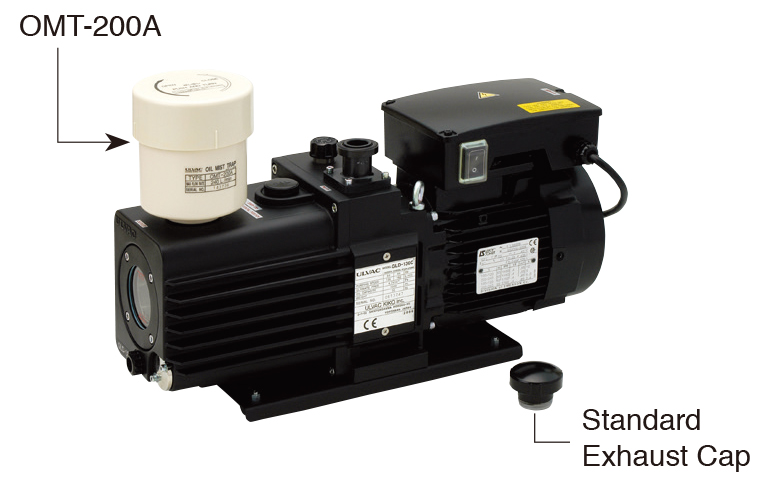
■GLD-137CC+OMT-200A+OFI-200V
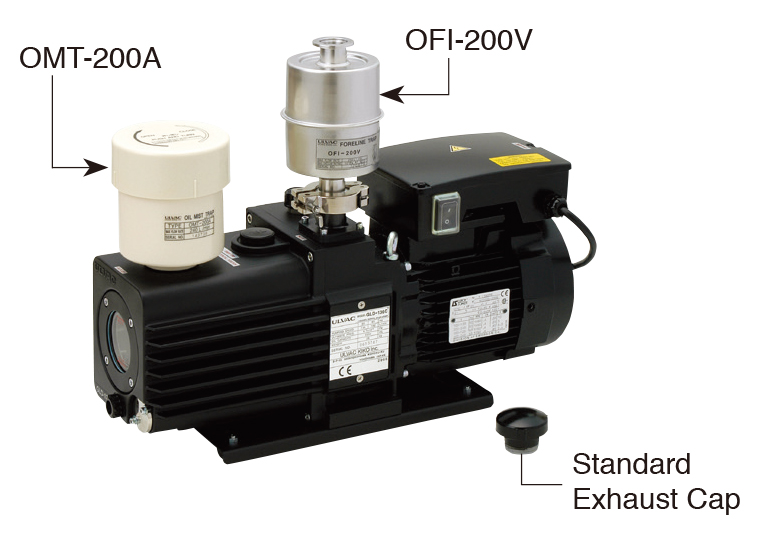
■GCD-136X+OMC-200
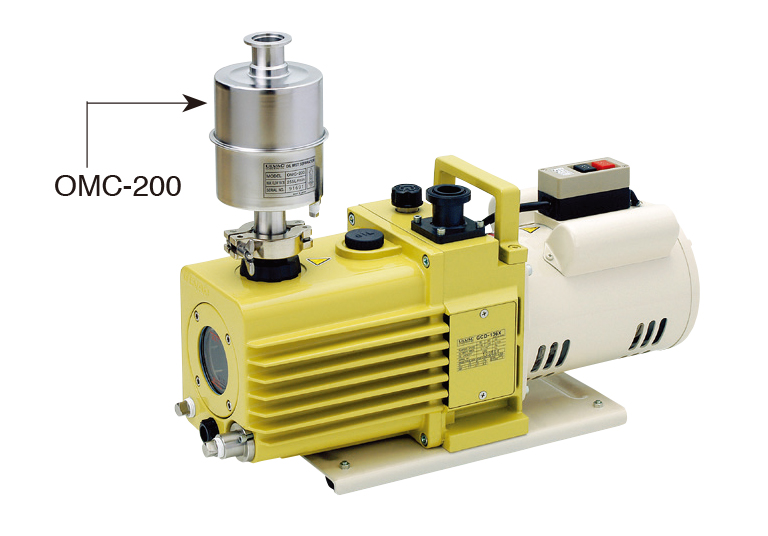
■GLD-137CC+OMI-200+排気管(ホース口・KF25フランジ)
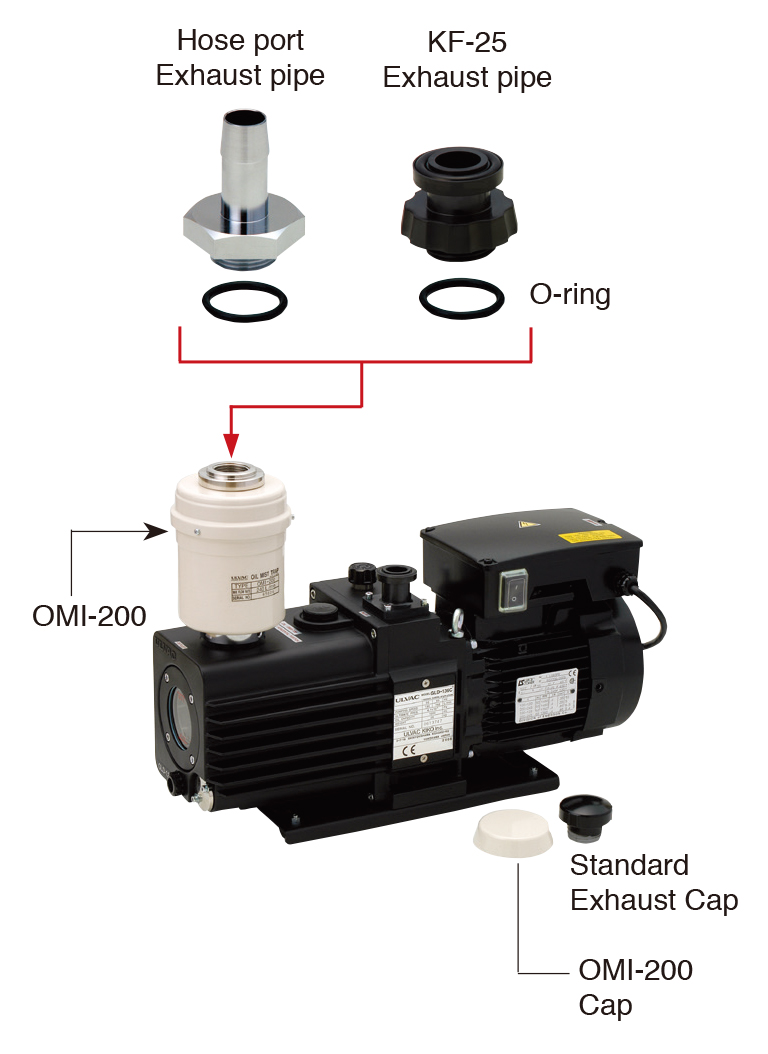
Attachment of Suction pipe
■GLD-137CC+Selectable Suction pipe(1)
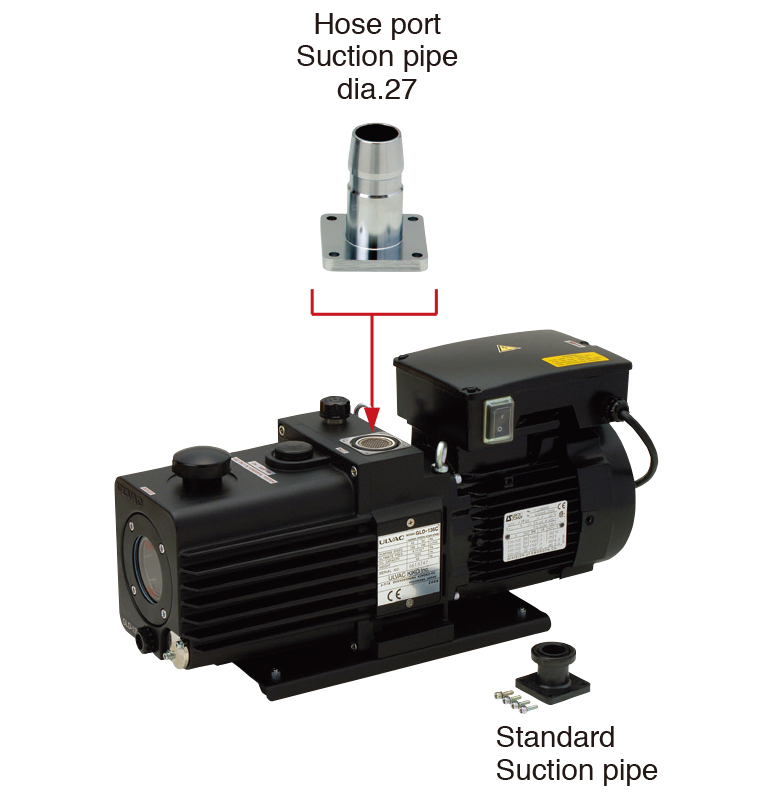
■GLD-137CC+Selectable Suction pipe(2)
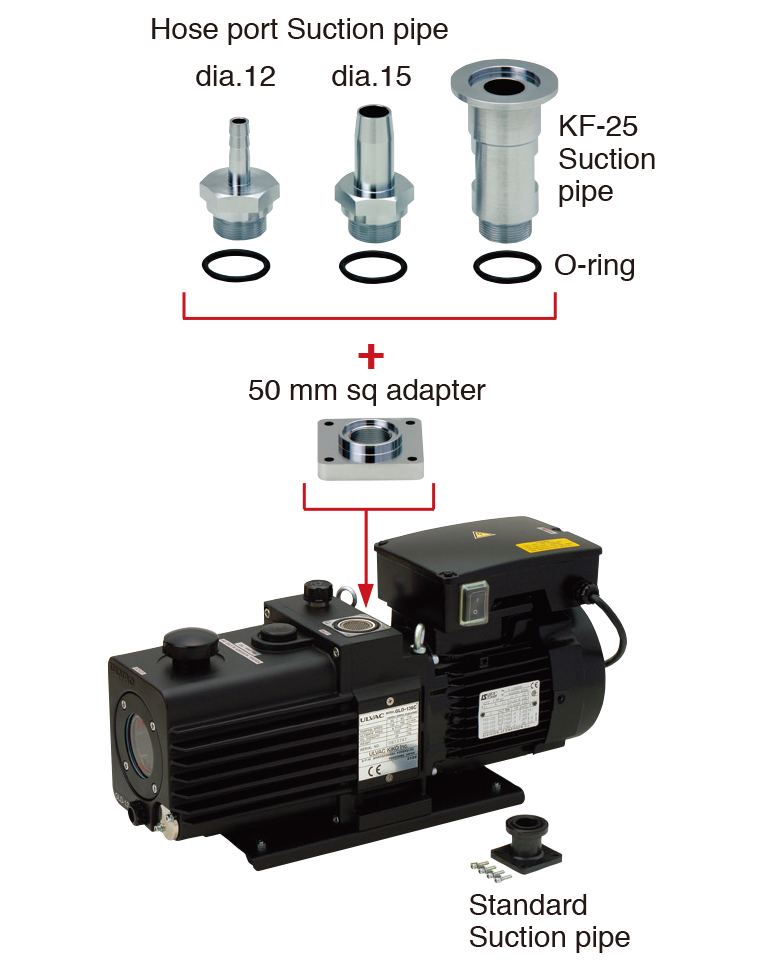
Attachment of KF Flange
■Standard composition
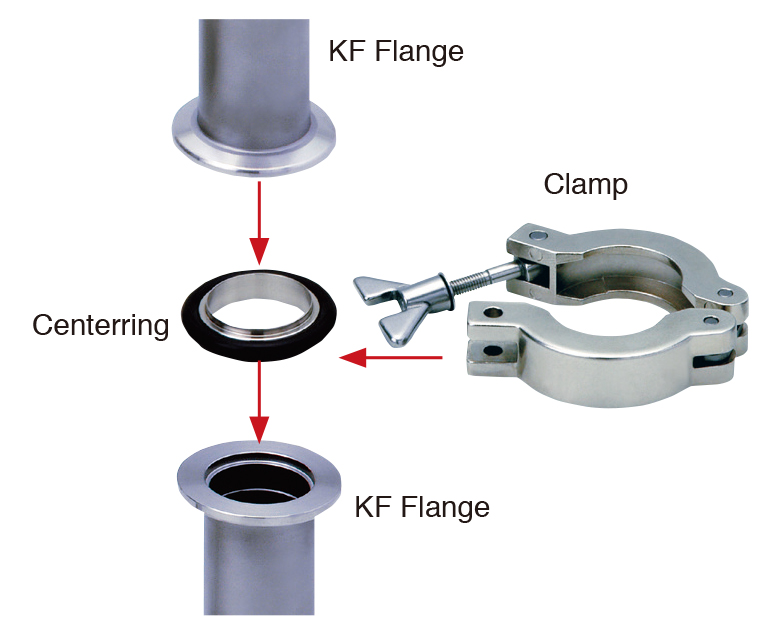
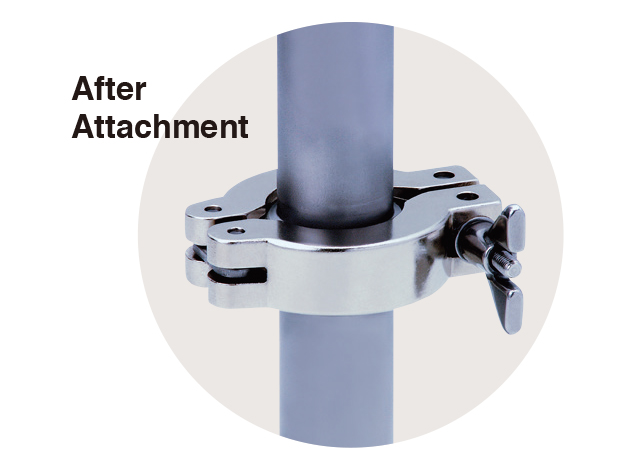
■Composition without O-ring
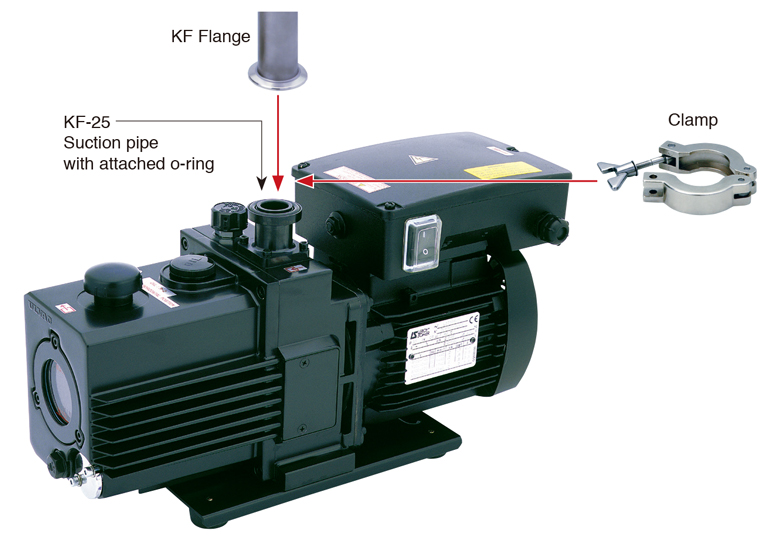
Gas Ballast
●Gas ballast valve (Condensible gas exhaust function)
After the condensable gas is sucked, it is liquefied in the compression and pressurization process of the pump and mixes into the pump oil. It starts circulating in the pump together with the oil.In this situation, the ultimate pressure of the pump reaches high, as it does when using oil with high vapor pressure. Also, the lubricating ability of the oil decreases, which shortens the life of the shaft seal.
If air or dry nitrogen is introduced from the gas ballast valve just before the compression and pressurization process of the pump, the condensable gas is not liquefied and is exhausted with the air or dry nitrogen through the exhaust valve.
When using a gas ballast valve, the greater "gas ballast effect" can be obtained when the pump temperature is higher, please open the valve and operate it for about 20 minutes to raise the pump temperature to approximately 70 ℃ before sucking condensable gas. At low temperatures, the "gas ballast effect" is below processing capacity.
If the gas ballast valve is left open when the condensable gas is not being sucked, not only the pump oil scattering and power loss occur, but also the ultimate pressure becomes high.
Also, the capability of the gas ballast valve to process condensable gas is limited. After exhausting a large amount of condensable gas, or exhausting condensable gas (air or gas containing a small amount of moisture or other vapor that contaminates the oil) without opening the gas ballast valve, the condensable gas remains in the pump oil.
In this case, when the gas ballast valve is opened while operating the pump, the oil temperature rises, and the pump oil can be cleaned by the gas ballast valve effect. Please continue this process until the ultimate pressure reaches the specified value while the gas ballast valve is closed. If the purification does not progress even after a long time, the pump oil needs to be replaced.






